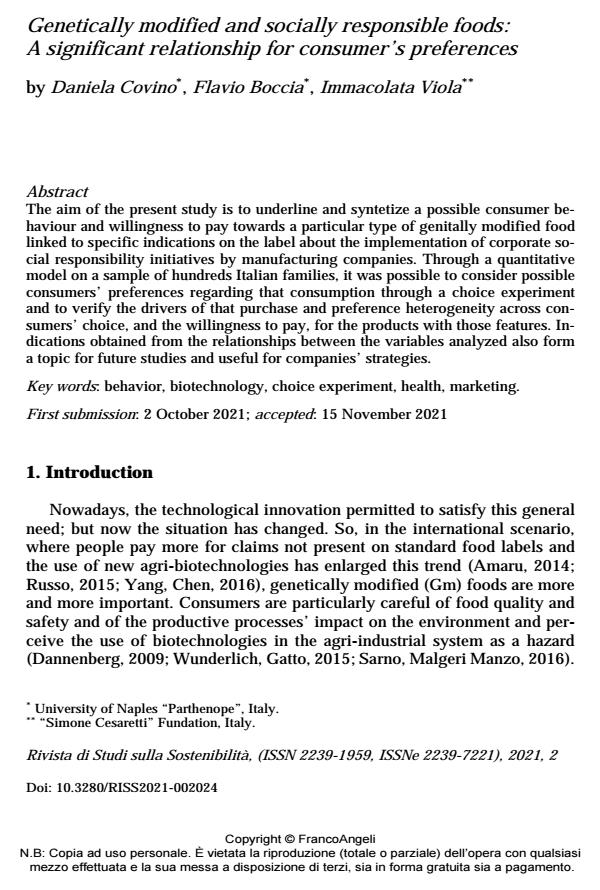Genetically modified and socially responsible foods: A significant relationship for consumer’s preferences
Titolo Rivista RIVISTA DI STUDI SULLA SOSTENIBILITA'
Autori/Curatori Daniela Covino, Flavio Boccia, Immacolata Viola
Anno di pubblicazione 2022 Fascicolo 2021/2
Lingua Inglese Numero pagine 13 P. 371-383 Dimensione file 250 KB
DOI 10.3280/RISS2021-002024
Il DOI è il codice a barre della proprietà intellettuale: per saperne di più
clicca qui
Qui sotto puoi vedere in anteprima la prima pagina di questo articolo.
Se questo articolo ti interessa, lo puoi acquistare (e scaricare in formato pdf) seguendo le facili indicazioni per acquistare il download credit. Acquista Download Credits per scaricare questo Articolo in formato PDF

FrancoAngeli è membro della Publishers International Linking Association, Inc (PILA)associazione indipendente e non profit per facilitare (attraverso i servizi tecnologici implementati da CrossRef.org) l’accesso degli studiosi ai contenuti digitali nelle pubblicazioni professionali e scientifiche
The aim of the present study is to underline and syntetize a possible consumer be-haviour and willingness to pay towards a particular type of genitally modified food linked to specific indications on the label about the implementation of corpo-rate social responsibility initiatives by manufacturing companies. Through a quan-titative model on a sample of hundreds Italian families, it was possible to consider possible consumers’ preferences regarding that consumption through a choice ex-periment and to verify the drivers of that purchase and preference heterogeneity across consumers’ choice, and the willingness to pay, for the products with those features. Indications obtained from the relationships between the variables ana-lyzed also form a topic for future studies and useful for companies’ strategies.
Parole chiave:behavior, biotechnology, choice experiment, health, marketing.
Daniela Covino, Flavio Boccia, Immacolata Viola, Genetically modified and socially responsible foods: A significant relationship for consumer’s preferences in "RIVISTA DI STUDI SULLA SOSTENIBILITA'" 2/2021, pp 371-383, DOI: 10.3280/RISS2021-002024